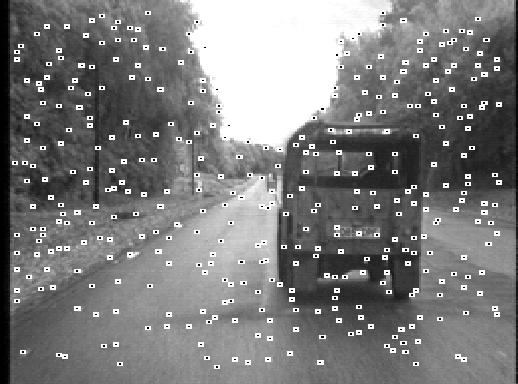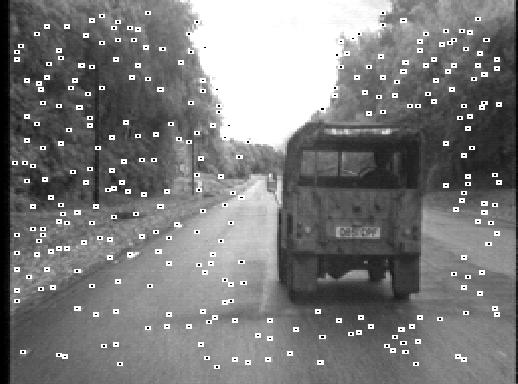
Figure 6: An example image with a large moving object travelling in front of the vehicle carrying the camera. The original set of 2D image features (``corners'') is shown superimposed.
The first stage in this integrated system is to run ASSET-2. In this combined system ASSET-2 tracks all of the moving objects and then subtracts from the original list of 2D features those features which correspond to these objects, leaving a list of features which have been produced by the static part of the scene, i.e. the rest of the world. This list is output to DROID, which runs concurrently.
In Figure 6 an example image is shown, with the complete (original) list of 2D features superimposed on it.

Figure 6: An example image with a large moving object travelling in
front of the vehicle carrying the camera. The original set of 2D image
features (``corners'') is shown superimposed.
Figure 7 shows the estimate of the object's outline made by ASSET-2. The number is the object number of the Landrover, as labelled internally by ASSET-2. The square near the centre of the Landrover is the tracked 2D object centre. The line coming out of this square is the overall image motion of the object, scaled by a factor of two.

Figure 7: The outline of the moving object as estimated by ASSET-2.
Figure 8 shows the final list of 2D features output by ASSET-2; this list is then fed into DROID.

Figure 8: The final list of 2D features output by ASSET-2 to DROID.